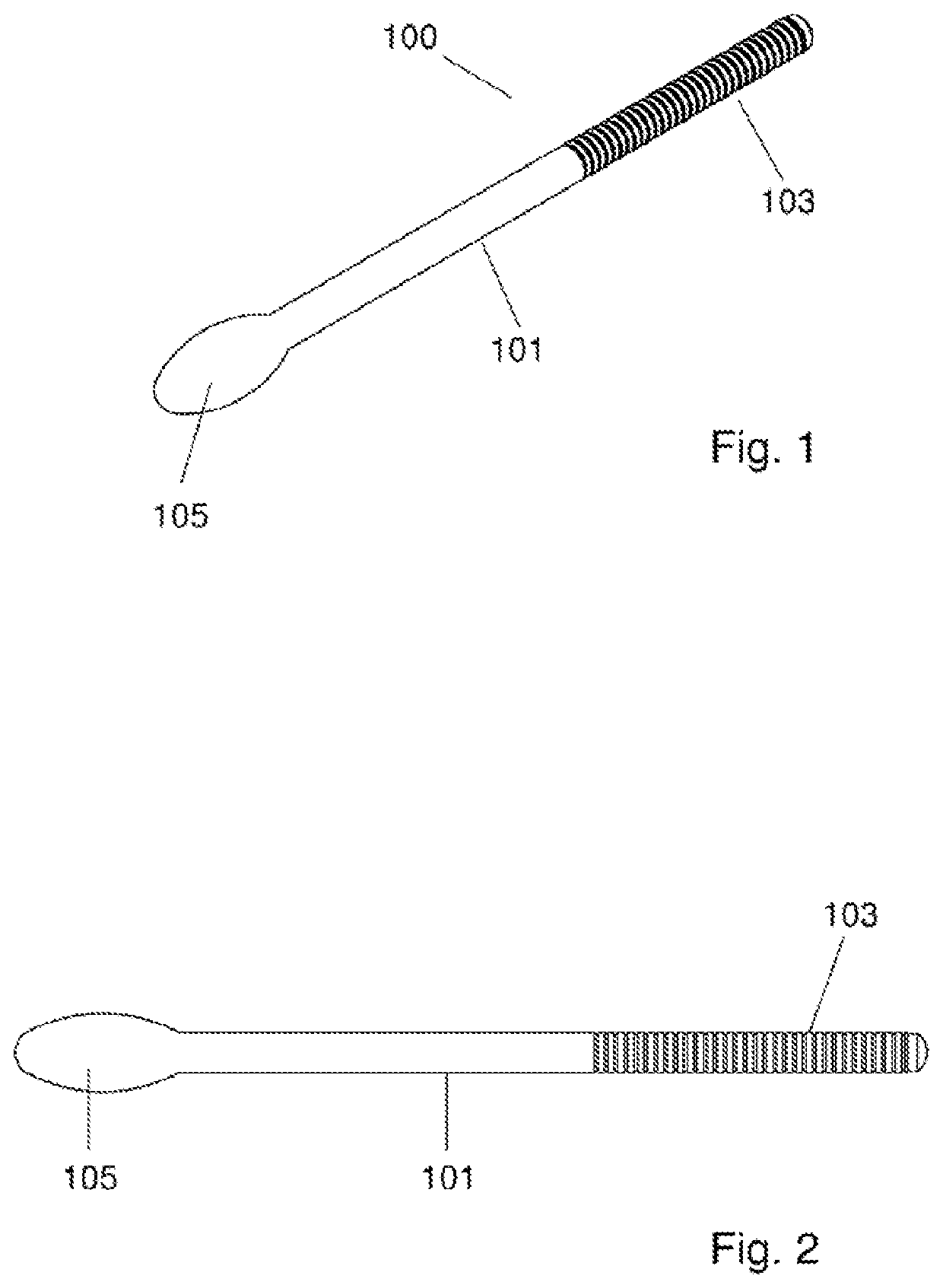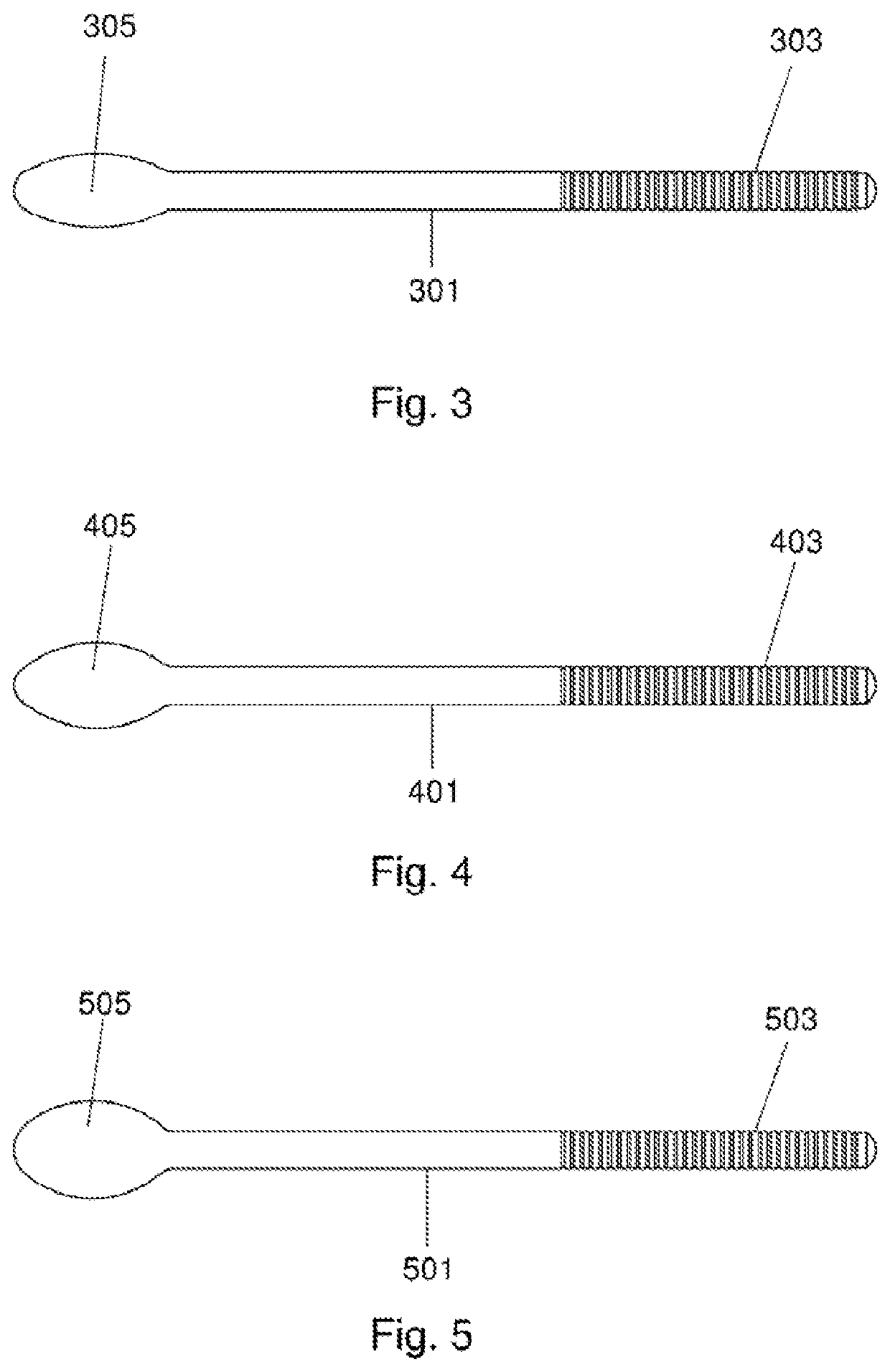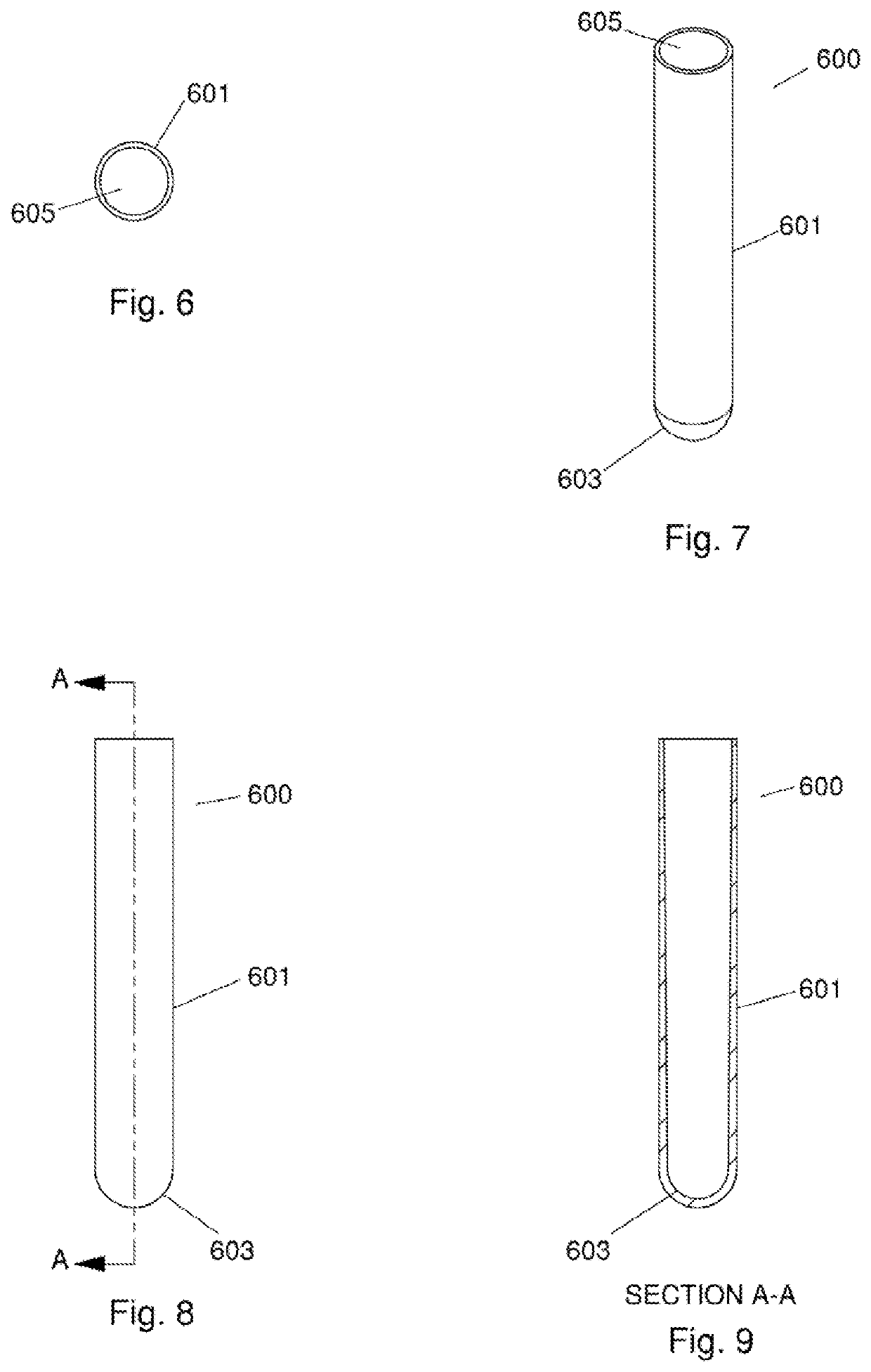Surgical visualization and medical imaging devices and methods using near infrared fluorescent polymers
a near infrared fluorescent and surgical visualization technology, applied in the field of medical imaging, can solve the problems that surgeons may not be able to fully visualize the target site and discern important aspects about the surgical si
- Summary
- Abstract
- Description
- Claims
- Application Information
AI Technical Summary
Benefits of technology
Problems solved by technology
Method used
Image
Examples
example 1
[0043]To prepare indocyanine green (ICG) for use in an exemplary medical device, ethanol was added to indocyanine green. 10 mil, of ethanol was added to 25 mg of ICG and mixed gently. Steralloy 2380A resin and Steralloy 2380B curative were mixed in the proportion of 50 ml, of 2380B with 200 ml, of 2380A. 2 ml, of the ethanol and ICG solution were added to the resin and curative combination. To provide a resulting surgical tool that has the proper aesthetic qualities, Steralloy PD-7 MP Opaque white color dispersion was added to the mixture. The ICG solution and color dispersion was added to the Steralloy 2380B curative and the resulting mixture was added to the Steralloy 2380A resin. The resulting mixture (approximately 20 parts per million of ICG) was poured into a mold to cast the resulting surgical device. It should recognized that other approaches, such as adding ICG or an ICG solution to a plastic feedstock prior to injection molding, blow molding, extruding, 3D printing, or the...
example 2
[0044]An enhanced NIR polymer was produced according to the present invention by embedding an enhanced NIR powder formed from ICG and milk powder into poly(caprolactone) (PCL; 2-oxypanone), a biocompatible thermoplastic material that is often used in FDA-approved devices such as suture materials, e.g. Monocryl (Ethicon), and then molding the ICG embedded polymer into the desired shape for the medical device. Milk powder was selected over semolina as NIR powder formed from ICG and semolina resulted in a coarse grain and some undesirable properties when used repeatedly under different heating conditions and with repeated water immersion. By contrast, when an ICG and DMSO mixture was used, the resulting polymer was only sufficient fluorescent for about 24 hours as the DMSO dissipated from the material. To achieve the finer grain powder, 50 g of dry evaporated milk was rehydrated with about 100 cc of neat ethanol and ˜500 m of water was then added to 2.5 mg of ICG in 1 ml of water from ...
example 3
[0046]FIGS. 1-5 illustrate a surgical visualization and medical imaging device in the form of a surgical bowel sizer 100. Bowel sizer 100 comprises a shaft 101, a grip 103 and a head 105. Shaft 101 may be of various lengths dependent on the surgical task required. Head 105 may be, for example, in the range of 25-33 millimeters in length. Bowl sizer 100 is made, at least in part, from a NIR polymer according to the present invention. For example, the entire bowler 100, just head 105, or just a portion of head 105 may be formed from the NIR polymer for near infrared fluorescence when exposed to near infrared radiation.
PUM
| Property | Measurement | Unit |
|---|---|---|
| depth | aaaaa | aaaaa |
| depth of penetration | aaaaa | aaaaa |
| depth of penetration | aaaaa | aaaaa |
Abstract
Description
Claims
Application Information
 Login to View More
Login to View More - R&D
- Intellectual Property
- Life Sciences
- Materials
- Tech Scout
- Unparalleled Data Quality
- Higher Quality Content
- 60% Fewer Hallucinations
Browse by: Latest US Patents, China's latest patents, Technical Efficacy Thesaurus, Application Domain, Technology Topic, Popular Technical Reports.
© 2025 PatSnap. All rights reserved.Legal|Privacy policy|Modern Slavery Act Transparency Statement|Sitemap|About US| Contact US: help@patsnap.com



